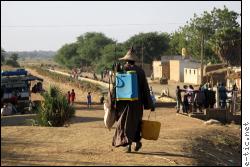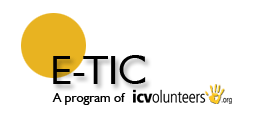ContextFarming practices  Approximately 70% of the working population in Senegal is involved in agriculture (including forestry, stock-breeding and fishing) (80% for Mali). Thus, farmers constitute the most important actors of the economy in their countries yet their activities are still unimproved compared to the advanced techniques used in Western countries with the use of new technologies. The vast majority of small-scale farmers grow to meet the needs of their families and only if there is any surpluses, it will be sold on the market. Senegal and Mali lack of infrastructures and sound agricultural policies which do not allow their self-sufficiency. Generally, the level of knowledge that farmers have on farming is basic. Farmers are aware that crops can be used as source for compost making (bio fertilizers). It is practice to allowing herders to venture inside farming lands after harvesting. In fact, while grazing, the cattle nourish the soil through cow-dung. Unfortunately, a few farmers have knowledge on compost making while the concept and perception of soil fertility level is unknown to all. Lack of technical assistance coupled with the missed opportunity to attend capacity building sessions and information sharing preclude farmers to obtaining better yields. However, traditional seed recycling method among farmers seems to be a common practice to save money and preserve biodiversity at household level. Farmers also faced challenges related to post-harvest management. The harvest is generally done with the help of family members and in some cases with the contribution of the community. With the self-subsistence model, not many farmers are selling their products. Rice (Oryza sativa) is the major cereal exported by Senegal (selon Oryza 17 %, soit 800.000 tons en 2010/11). However, Senegal imported 350.000 tons from Asian countries, such as Thailand, China, and Indonesia. The diversity of the production is however not to be pointed out with around 150.000 tons of rice per year, 600.000 tons of millet (Panicum miliaceum, L.), mais (Zea mays L.), and fonio (Digitaria exilis) another variety of millet together are around 100.000 tons, 50.000 tons of cotton (Gossypium spp.) which is progressing with the national corporation which is exploiting the textile. The production of groundnuts (Arachis hypogaea) is the most important cash crop after rice and its exploitation is object of a multitude of national policies developed and implemented by government (Senegalese and Malian) and other institutions working on agriculture in sub-Saharan countries. Water and land managementMost of the time, farmers rely on the change of seasons (rainy or dry, depending on the type of crop) to start cultivating food or cash crops. However in some areas, such as the Senegal River Valley, farmers are irrigating, for the most part with river water, and therefore producing even if there is a drought. The percentage of cropland that is irrigated is calculated by dividing irrigated land by total cropland for a given country. Irrigated land refers to the area of land with access to irrigation in a given country each year. These data refer to, in thousands of hectares, the area of land in a given country which is equipped to provide water to crops. These include areas equipped for full and partial control irrigation, spate irrigation areas, and equipped wetland or inland valley bottoms. Results from the field studyWith regard to the survey carried out by means of a standardized questionnaire, responses were obtained from 132 farmers, stockbreeders and fishermen. As far as the main activity of the respondents is concerned, 46.5% are involved in agriculture, 42.6% are involved in stock-breeding and 14% are involved in (river) fishing. 75% of lands are owned by the farmers themselves, while 13.2% are managed and cultivated by the community and 11.8% are rented. With regard to agricultural practices, it was found that 24.3% of crop seeds are bought as opposed to 28% being obtained during the last harvest. There is widespread use of conventional (chemical) fertilizers and pesticides by farmers. 43.9% of the respondents use chemical fertilizers, whereas only 9.3% of them use organic fertilizers. 28% indicated using pesticides and 6.5% use products to preserve foodstuffs. As far as livestock is concerned, 47.7% indicated that they use vaccines. With regard to the sale of products, it was found that the majority of respondents sell on the local market, with a smaller margin selling their produce in neighboring villages and to outside buyers. 52.4% of respondents indicated that they, themselves, fix the sale price of their products, whereas 40.3% have the prices fixed by intermediaries. |

